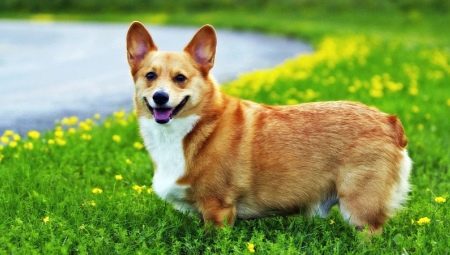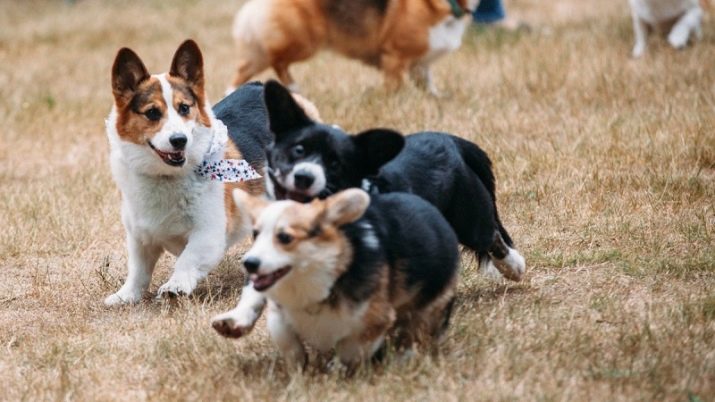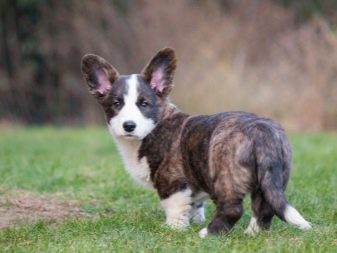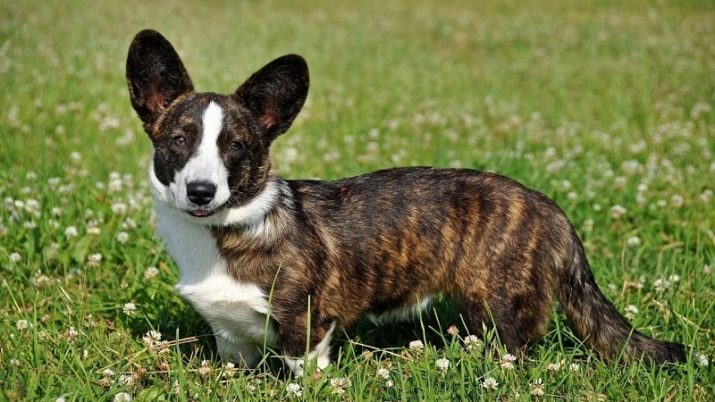Corgi weight and dimensions

Welsh Corgi are very cute little dogs with a long body and large ears. This breed appeared 3 thousand years ago. And it became popular thanks to Queen Elizabeth II, who loved these dogs very much.

Characteristic
Corgis are divided into 2 types.
- Pembroke... It translates from English as "a table on 4 legs", and was named so because of its peculiar structure. Fluffies also belong here, they differ in wool, they have a longer coat, and there is also no undercoat. Fluffy translates to "soft".
- Cardigan. Translated as "jumper". If you look at the animal, you will get the feeling that it is dressed in a jumper. It seems this is due to the wide sternum.
The description of the breed looks like this:
- the body is powerful, strong, but at the same time not tall;
- the head is somewhat similar to a fox, a very smart look;
- the nose is colored black;
- the eyes are small in size and set wide apart, have a brown tint;
- the ears are upright;
- the length of the neck is fully proportional to the body;
- the back is very strong and straight;
- wide chest;
- if the tail is docked, then it is small, if not, then it goes in a straight line along the body, but does not wrap itself in a ring some countries have banned docking);
- the front legs are straight and short, the shoulders are close to the sternum, the hind legs are much stronger and more flexible, the dogs move very freely, actively, the front legs should be well brought forward;
- the coat is long and thick, with a good undercoat, should not be too soft or, on the contrary, coarse or wavy;
- the color can be solid, sable, deer or tan, there are white spots on the chest, neck and legs, head and muzzle.


Height and weight at different periods of life
When a puppy is first born, its weight is between 150 and 500 grams. In 10 months, weight can increase 20 times. In this regard, the diet should be very high in calories and balanced, but you should not overfeed the animal. A puppy's digestive system may not be able to handle a lot of food, and as a result, stool is disturbed. Only newly born puppies should be weighed every day for a week. The first 2 days, the weight may go away, then it will gain back. In 10 days, the weight will double.
For the first couple of months, breeders are fully responsible. And almost always they are professionals in their field, with experience. But as soon as you get a puppy, then all the worries fall on your shoulders. And not quite an experienced owner can feed his pet with food from the master's table. But it is strictly forbidden to do this, because it can only harm the animal. Such actions can even be fatal. To understand how the puppy develops, you can refer to the table of parameters, where the weight in kg and height in cm are indicated.
- Newborns: 0.15-0.5 kg, up to 7 cm;
- 1 month: 1-1.5 kg, 7-10 cm;
- 1.5 months: 2.3-3 kg, 7-10 cm;
- 2 months: 2.7-4 kg, 7-10 cm;
- 3 months: 5-6 kg, 12 cm;
- 4 months: 7-8 kg, 15 cm;
- 5 months: 8-9 kg, 20cm;
- 6 months: 9-10 kg, 25 cm;
- 7-10 months: weight of an adult dog, 30 cm.

There are some standards that the weight must meet.
Welsh corgi cardigan:
- females - 11.34-15.42 kg;
- males - 13.6-17.24 kg.
The Pembroke weighs a little less than the cardigan:
- females - up to 12.7 kg;
- males - up to 13.6 kg.
If the dog does not participate in shows, then it may have a slightly different weight:
- females - up to 13 kg;
- males - up to 15 kg.
Sometimes there may be slight fluctuations in the weight of an adult. Please note that all the data shown in the table may vary slightly, as all dogs are individual. All values can vary within 10-15%, but not more.

What can affect growth?
Before you can pick up a pet from a breeder, at least 45 days must pass. And during this time they must be vaccinated and metrics, which will then be exchanged for a pedigree. The first vaccination is the most important one, before the puppy is treated for parasites. If the pet has worms, food will not be absorbed, as a result of which the stool will be disturbed, and this will damage its development.
When you are going to pick up a puppy from breeders, then you will need to take a little feed from them so as not to abruptly transfer it to another... If this is not done, at first there may be problems with digestion, and the animal will not be able to gain the desired weight. And with rapid growth, the pet will be very thin. Therefore, your pet simply needs full and frequent feeding. At 4 months of age, the puppy should be gaining 10% of its weight. The daily ration is divided into 4 servings and each serving weighs 200 g (not dry food). In this case, the food is well absorbed, and the animal gains weight.
Pay special attention! When a pet receives natural food, it is necessary to add vitamins and minerals to its diet. You can buy them in a specialized store. But before doing this, consult your veterinarian. Good and frequent walks and games are great for your health and can help you gain muscle mass. But it is also influenced by a genetic predisposition.
In the event that the parents had muscle or bone problems, most likely the puppy will have them too.

Life span
Welsh Corgi live on average from 12 to 15 years. But if you follow the feeding regimen correctly, provide high-quality care from the moment the animal is born, then the dog will be able to live up to 20 years. In general, the corgi is one of the healthiest breeds that is not prone to disease. But you need to be prepared for the following diseases may occur:
- obesity;
- back problems;
- vision problems;
- epilepsy;
- complication after a difficult birth.
Most diseases appear only with serious mistakes in pet care.

In the next video, you can take a look at the evolution of the corgi from puppy to 2.5 years old.






































